After the presentations, place to the first impressions. Volvo gathered the media in Sweden to unveil a new 100% electric car. It’s called the EX90, and it’s an electric SUV that will be sold in early 2024 alongside the thermal XC90. We went there to see with our own eyes the efforts made by Volvo and its Chinese group Geely.
As you can imagine, this 7-seater SUV will not sell much in France. First of all, it is a very expensive car, more than 90,000 euros. Then it’s massive. The American and Chinese markets will be Volvo’s preferred target for this imposing 2.8-tonne car.
Nevertheless, the EX90 introduces a new architecture, and it is a milestone in the electrification and modernization of the Volvo group, a subsidiary of Chinese Geely. Especially since this EX90 has little to do with the previous XC40 and C40, Volvo’s first 100% electric cars.
The challenge for Volvo is of different kinds. The first is the forced march towards the total electrification of its fleet. The EX90 is more than that, it’s also Volvo’s first vehicle with a modern computing platform. It is the first Volvo to be truly defined by its software and to be part of a larger ecosystem.
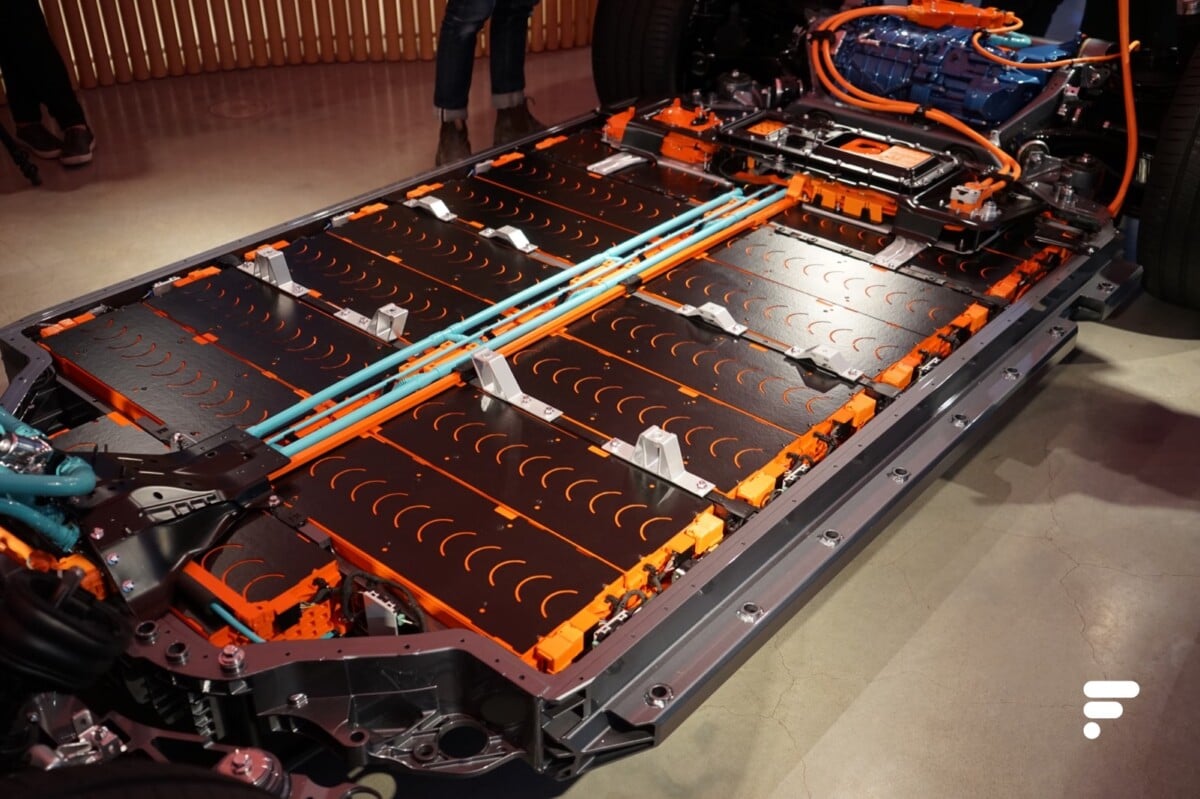
Every corner of the EX90 features a wide array of technology from well-known partners like Nvidia, Qualcomm, and even Epic Games (yes, the creator of Fortnite).
We are changing the paradigm since we find Android Automotive powered by a Qualcomm Snapdragon chip for infotainment, and Nvidia chips for everything related to artificial intelligence with security and autopilot. Moreover, we can clearly see the Luminar LiDAR mounted above the windshield, it is one of the many sensors present on the car.
The “safest car in the world”
While Tesla is currently divesting itself from many sensors and relying only on cameras, the reverse is happening with just about every other automaker. They are even introducing new sensors for autonomous driving.

It’s simple, Volvo wants to make its EX90 the safest car in the world. It takes many forms. Two cameras facing the driver and a sensor on the steering wheel make it possible to determine the driver’s level of vigilance. The system can thus stop the car on the side of the road and switch on the hazard warning lights, if necessary.
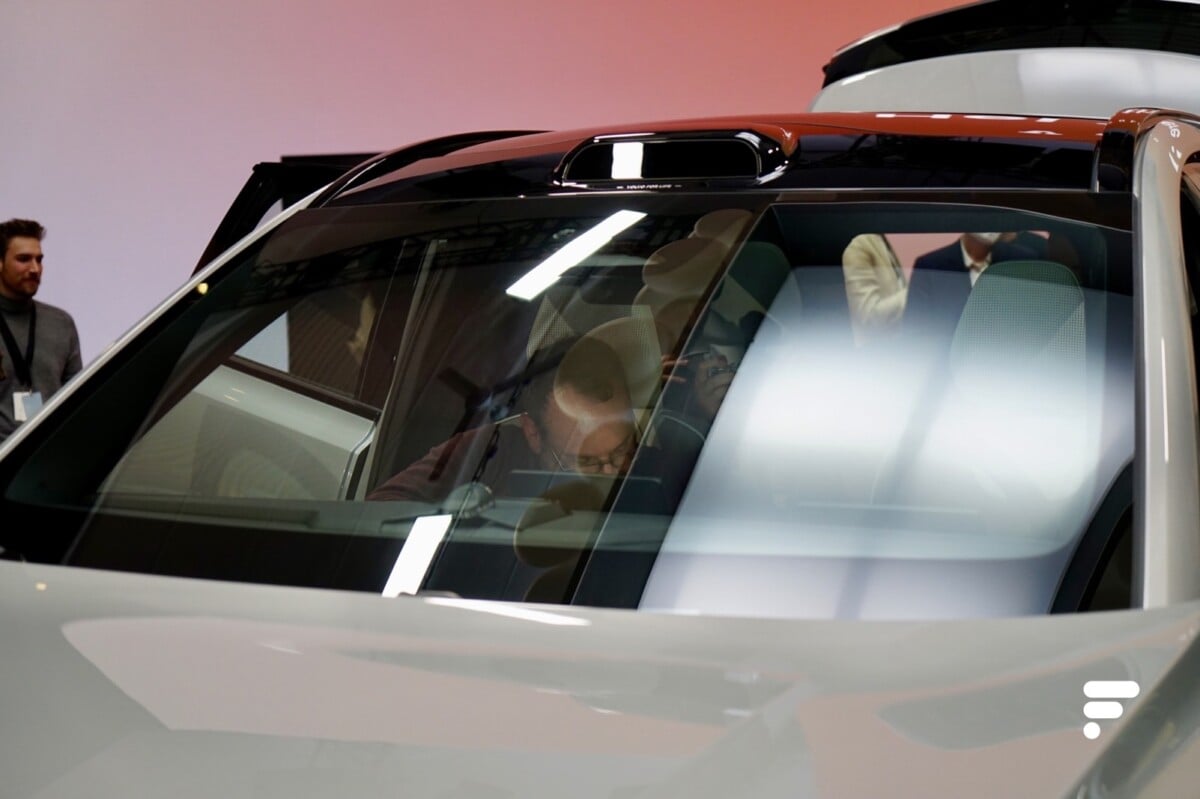
There is the LiDAR that you can’t miss (London taxi style). LiDAR stands for Light Detection and Ranging, light is used in the form of a pulsed laser to measure distances precisely and accurately. According to Volvo, this makes it possible to recognize and react to a pedestrian at a distance of 250 meters.
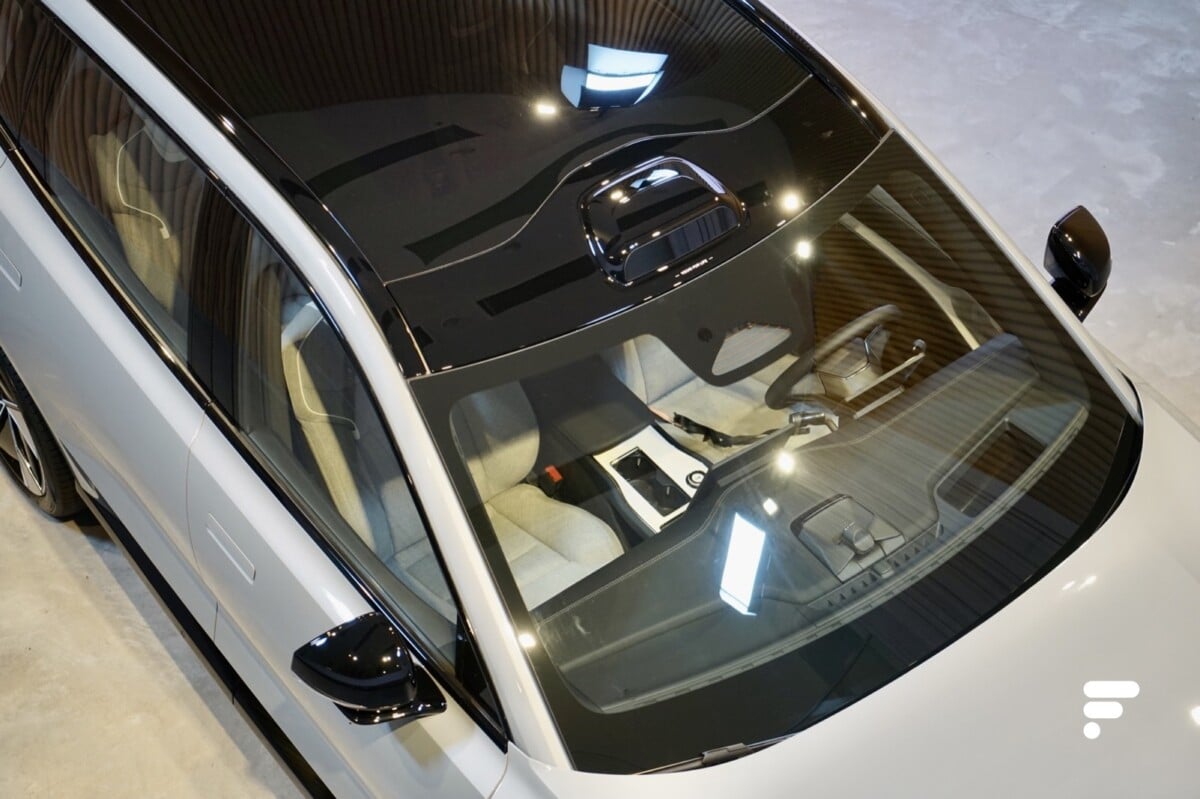
These sensors provide various supervised driving functions. The car monitors everything that happens around to edit accidents that can potentially be avoided.
In the future, these technologies will pave the way for Level 3 autonomous driving, but compared to the often very rudimentary assistance systems of other models, Volvo goes a long way with the EX90. Level 3 autonomous driving, which is not yet regulated in all markets, is coming soon. Volvo will be able to update vehicles remotely to enable new Adas (Advanced Driver Assistance Systems) functions.
Finally, there is also an on-board radar designed to detect a child or an animal has been left in the vehicle. If the system detects a child or a dog, it can display a reminder, prevent you from locking the doors and start the air conditioning system if necessary.
A very Californian new interior
The EX90 arrives with a new interior design, largely shared with the Polestar 3. The dashboard sports minimalist ergonomics with a large, vertically oriented central touchscreen.

A smaller screen in front of the driver groups the digital instruments, displaying speed and range. There’s also a heads-up display so you don’t have to take your eyes off the road.
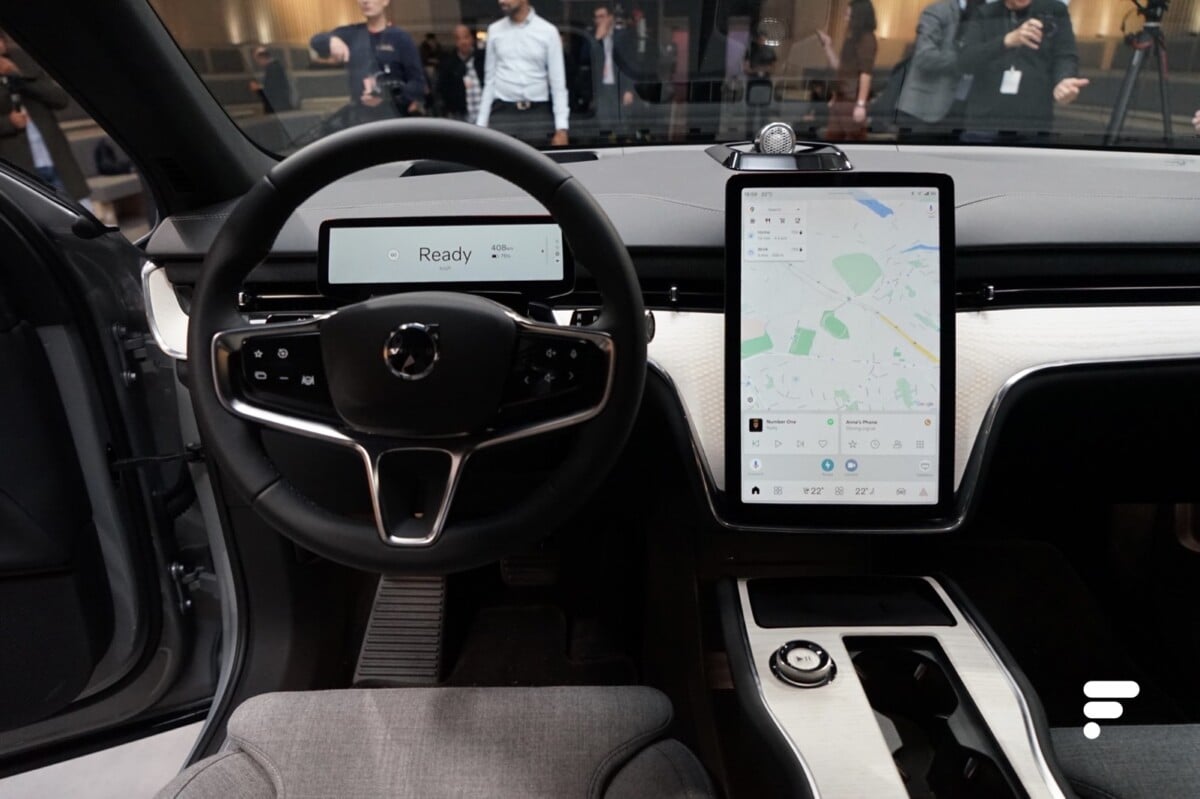
Almost all physical buttons are banned. The exception, the only one at first glance, is a large volume button on the center console. This gives the Swedish design a recognizable Californian touch.

Everything takes place on the large central 14.5-inch touchscreen. Here, it’s an in-house interface that runs on Android Automotive. The screen has been cut out with a system bar at the very bottom, and a context bar just above.
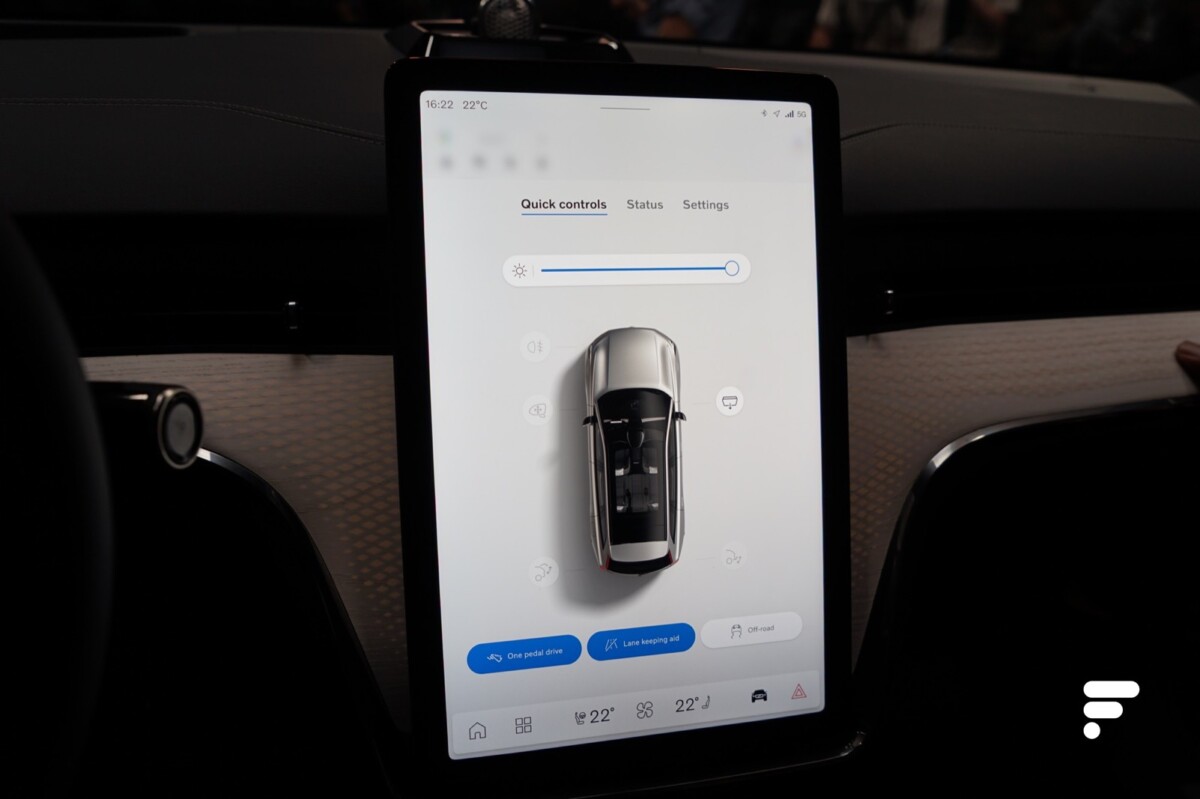
We might regret that the air conditioning controls are at the bottom of the screen, that the glove box opens via a button on the screen, but this spirit marks a real change for Volvo.
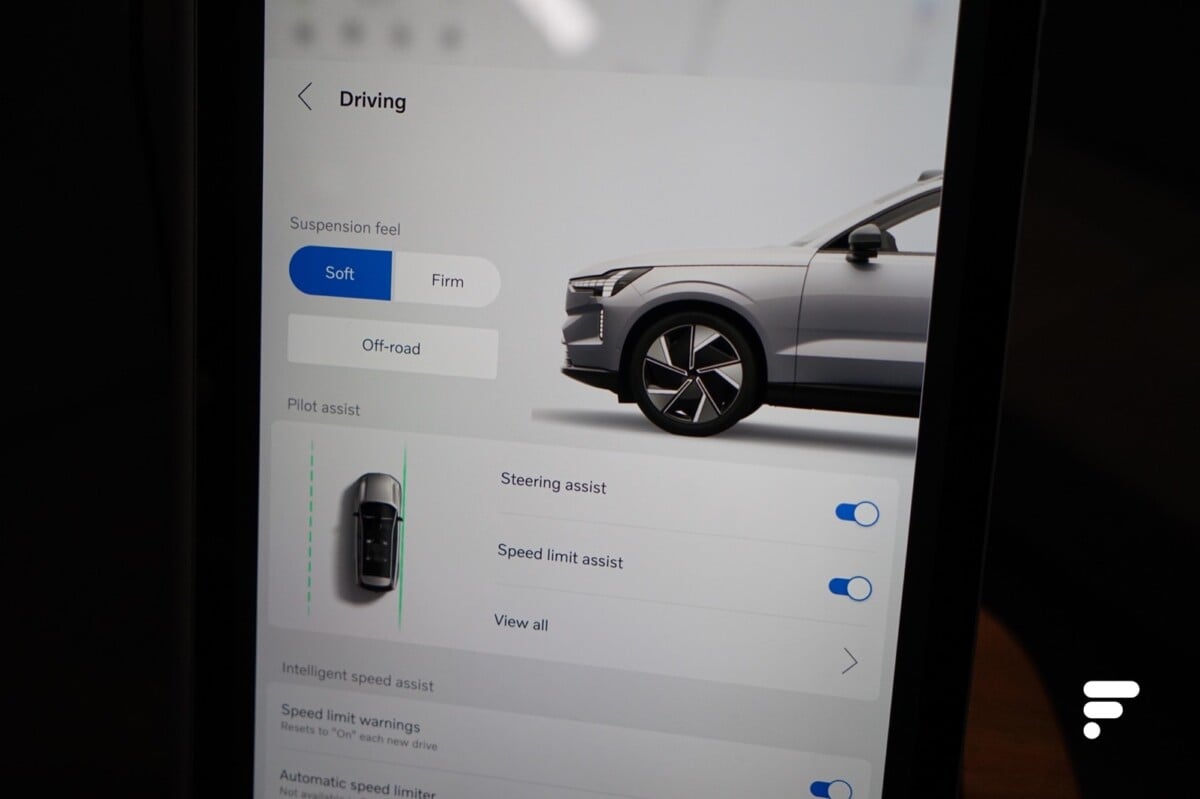
It’s simple, beautiful and above all very fluid. While the first Android Automotive integration provided a frustrating overall experience, on the XC40 and C40 it seems like a bad memory here.
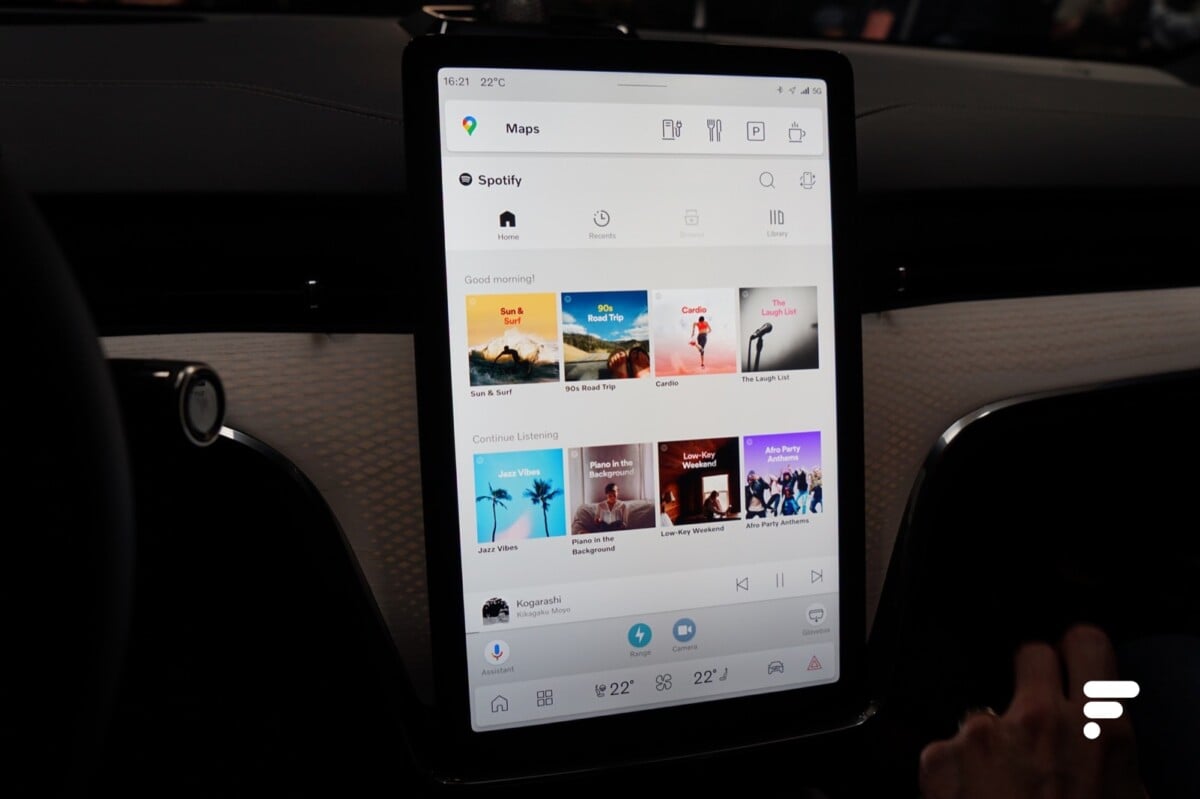
It’s big inside, there are 7 seats, and yet still room in the trunk.
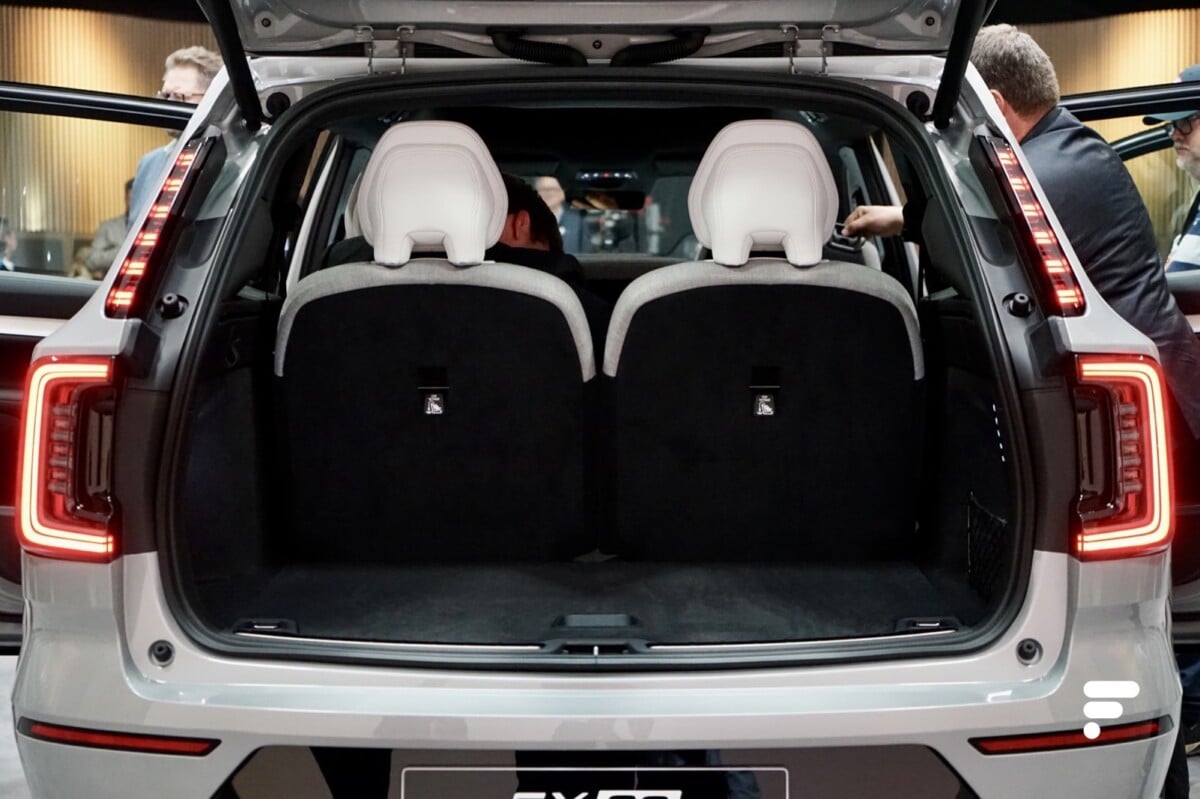
There is even a frunkya front trunk, and most importantly, it’s usable for storing cables and other crap that you wouldn’t want to have to dig up under all your other luggage when you’re traveling.
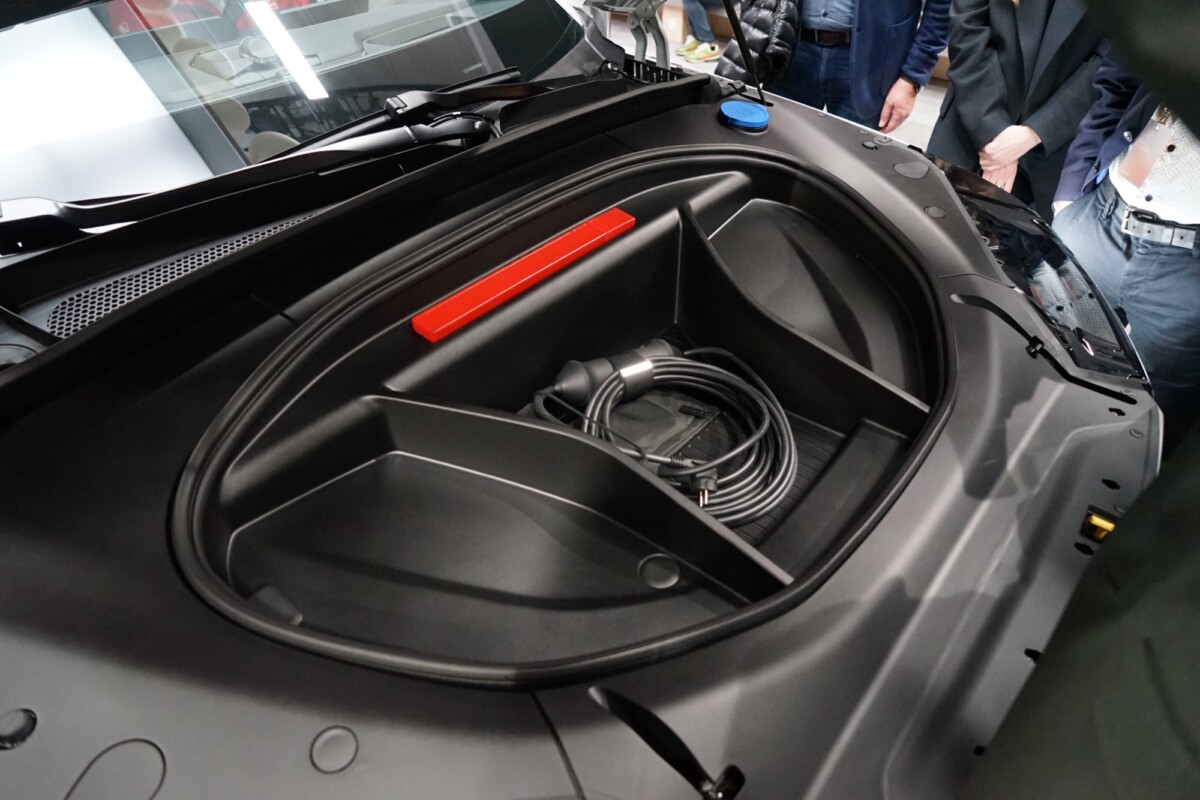
Honestly, I just appreciate the effort to give as much usable volume as possible.

A Scandinavian design language with some follies
On the outside, as much to tell you that the EX90 slices. It slices, already, because it is massive. This is not a car that you can park in just any parking lot. It is so big and so heavy that it is an aberration to say that it is 100% electric and that it carries several hundred kilos of batteries for all short trips.
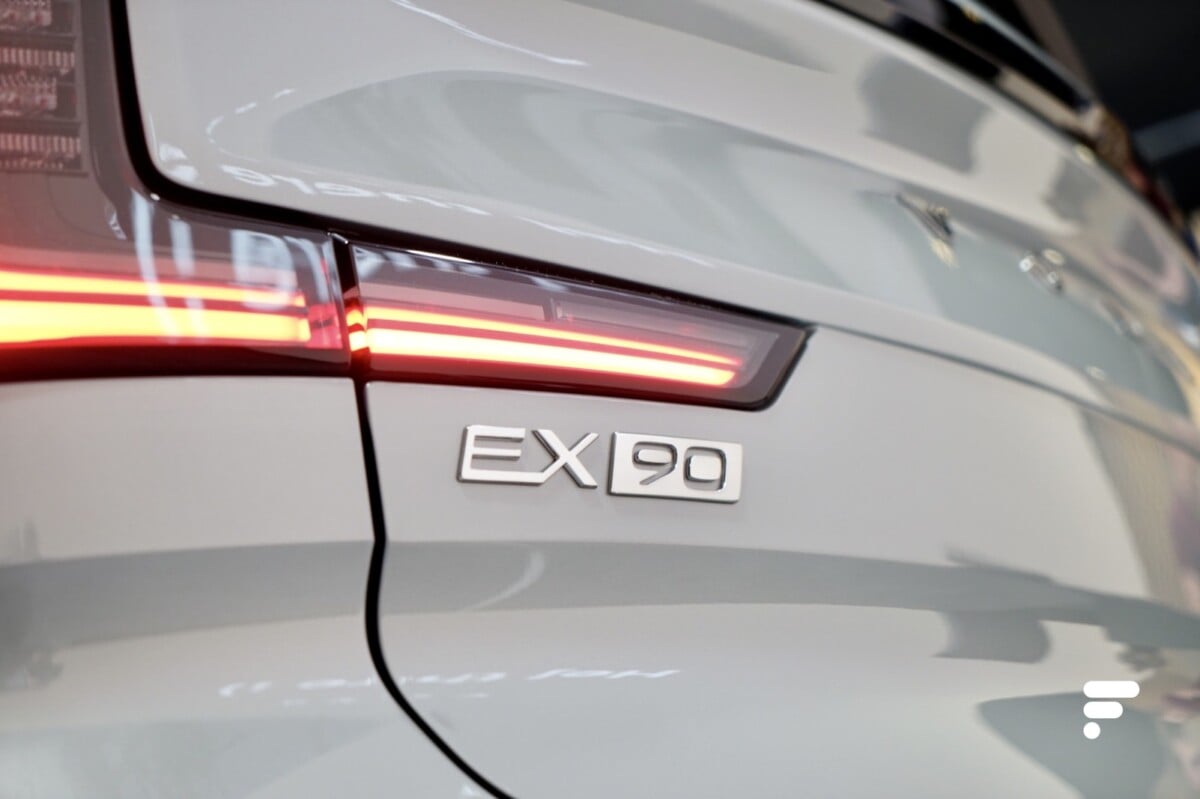
It is frankly not the all-electric future that we dream of on Frandroid. Nevertheless, we welcome a few technological nods. Precisely, this is the case of the retractable headlight. Matrix LEDs hide the real headlight.
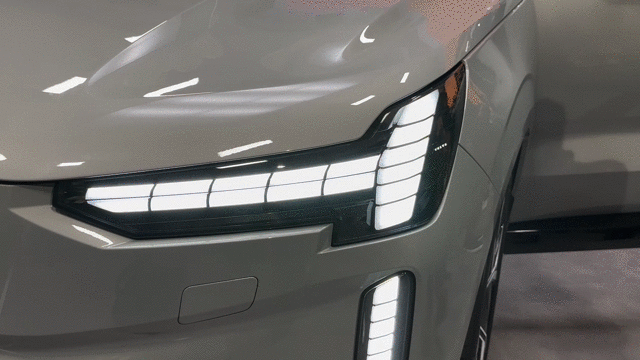
If you are going to buy an EX90, my advice would be to immediately grow an extra kidney for sale as a precaution for possible replacement costs for those headlights. Otherwise, as you can see from the GIF, it’s extremely fun.

From a design point of view, the Swedish brand has retained its elegant and conservative Scandinavian design language.
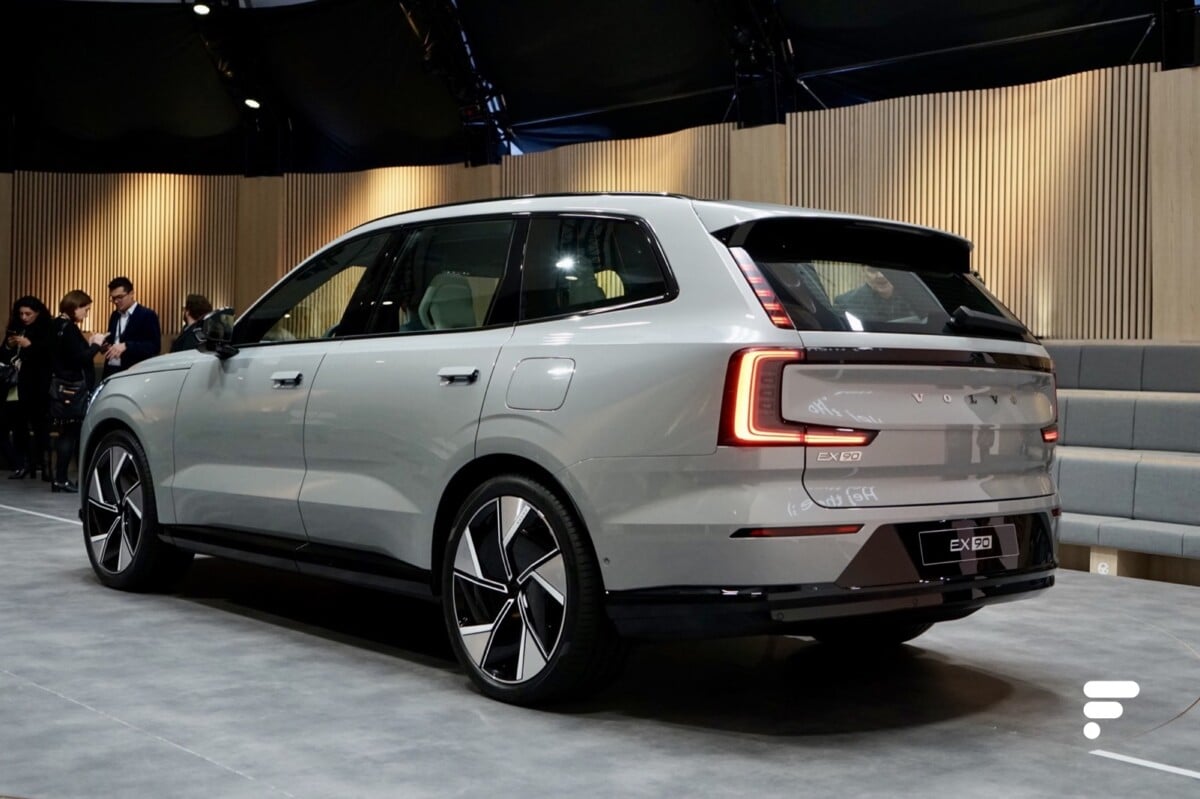
Truth be told, aside from its smoother exterior bodywork, flush door handles and smoothed front grille, the Volvo EX90 shares many design cues with its internal combustion engine counterpart, the XC90. Between us, we would have liked to find the lines of the concept, which was also much lower.
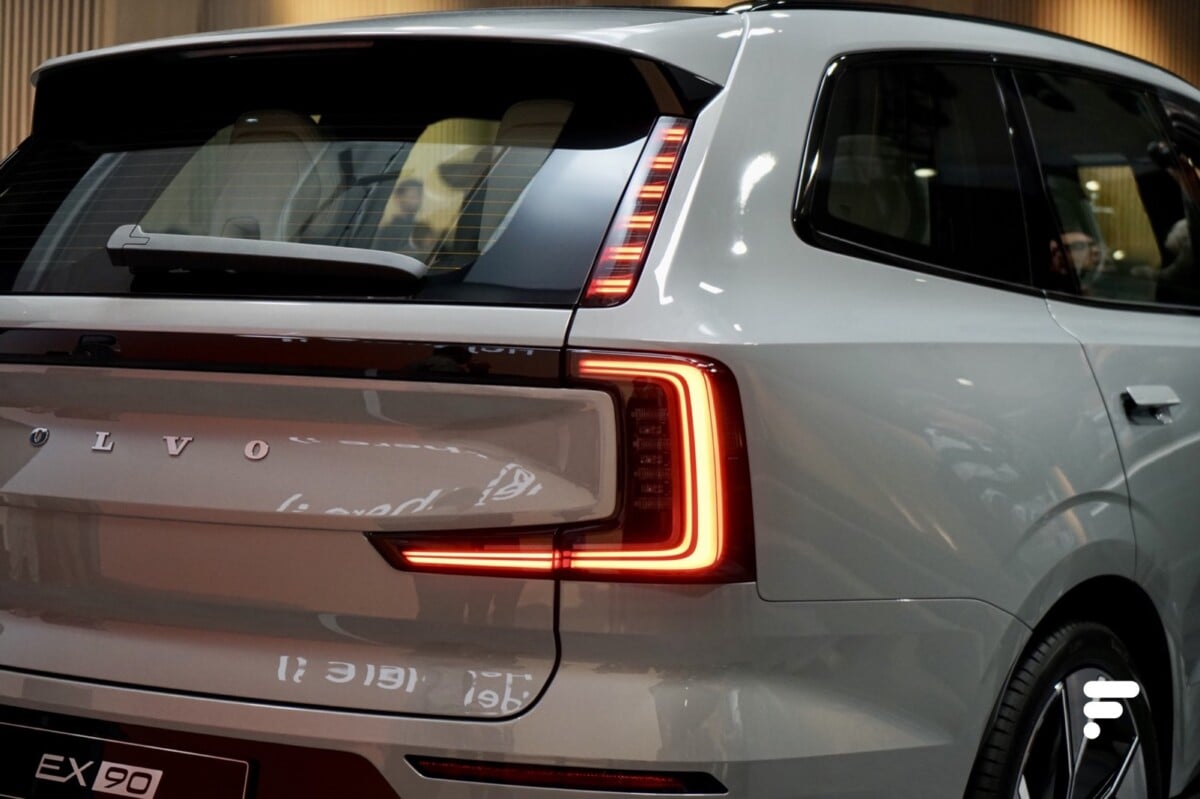
Volvo has also installed oddly designed side mirrors, which never get in the way of the cameras.

Let’s change the subject, without transition, let’s talk about the load. In the announcement article, we mentioned the aberration of such a large battery for an electric vehicle. Admittedly, the autonomy is comfortable with nearly 600 kilometers in the WLTP cycle, but it is absurd to have to carry several hundred kilos of batteries for daily journeys.
There is nevertheless a particularity of the new Volvo EX90 to remember. The latter can supply energy as well as receive it. For example, by connecting it (with a special two-way wallbox) to your house, it could power household appliances, perhaps to compensate for a network outage. Or, it could charge another electric car.
All the ambition of Volvo and its Chinese group Geely
The EX90 reflects all the ambition of Volvo and its Chinese group Geely. It is not only imposing by its size and its weight, it is technologically daring by putting human security at the heart of its design, which seems much more judicious than any gimmick technological.
